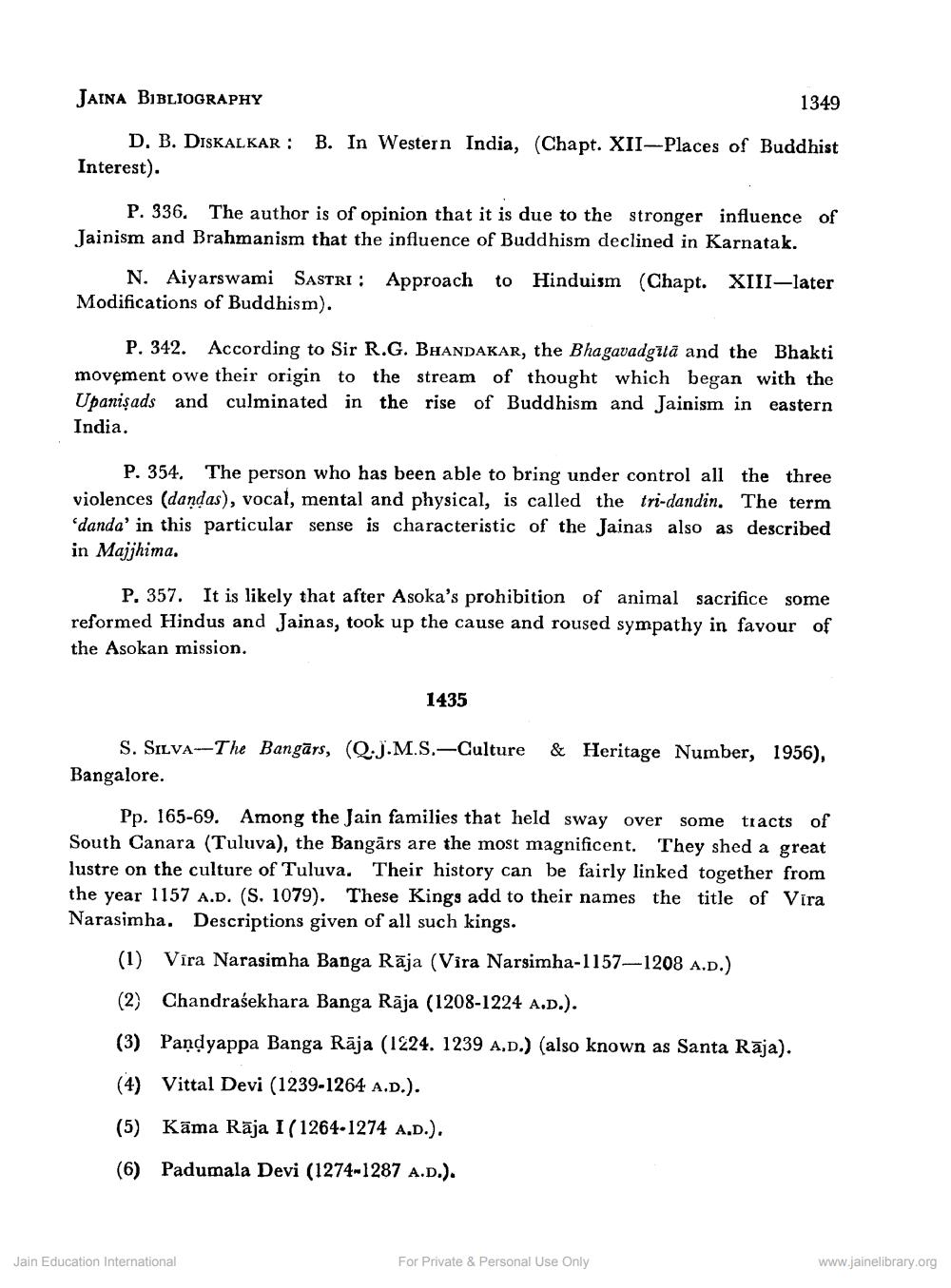________________
JAINA BIBLIOGRAPHY
1349
D. B. DISKALKAR : B. In Western India, (Chapt. XII-Places of Buddhist Interest).
P. 336. The author is of opinion that it is due to the stronger influence of Jainism and Brahmanism that the influence of Buddhism declined in Karnatak.
(Chapt. XIII-later
N. Aiyarswami SASTRI ; Approach to Hinduism Modifications of Buddhism).
P. 342. According to Sir R.G. BHANDAKAR, the Bhagavadgitā and the Bhakti movement owe their origin to the stream of thought which began with the Upanişads and culminated in the rise of Buddhism and Jainism in eastern India.
P. 354. The person who has been able to bring under control all the three violences (dandas), vocal, mental and physical, is called the tri-dandin. The term danda' in this particular sense is characteristic of the Jainas also as described in Majjhima.
P. 357. It is likely that after Asoka's prohibition of animal sacrifice some reformed Hindus and Jainas, took up the cause and roused sympathy in favour of the Asokan mission.
1435
S. Silva-The Bangārs, (Q.J.M.S.-Culture & Heritage Number, 1956), Bangalore.
Pp. 165-69. Among the Jain families that held sway over some tracts of South Canara (Tuluva), the Bangārs are the most magnificent. They shed a great lustre on the culture of Tuluva. Their history can be fairly linked together from the year 1157 A.D. (S. 1079). These Kings add to their names the title of Vira Narasimha. Descriptions given of all such kings.
(1)
Vira Narasimha Banga Räja (Vira Narsimha-1157-1208 A.D.)
(2) Chandrasekhara Banga Rāja (1208-1224 A.D.).
(3) Pandyappa Banga Rāja (1224. 1239 A,D.) (also known as Santa Rāja).
(4) Vittal Devi (1239-1264 A.D.). (5) Kāma Rāja I ( 1264-1274 A.D.). (6) Padumala Devi (1274-1287 A.D.).
Jain Education International
For Private & Personal Use Only
www.jainelibrary.org




